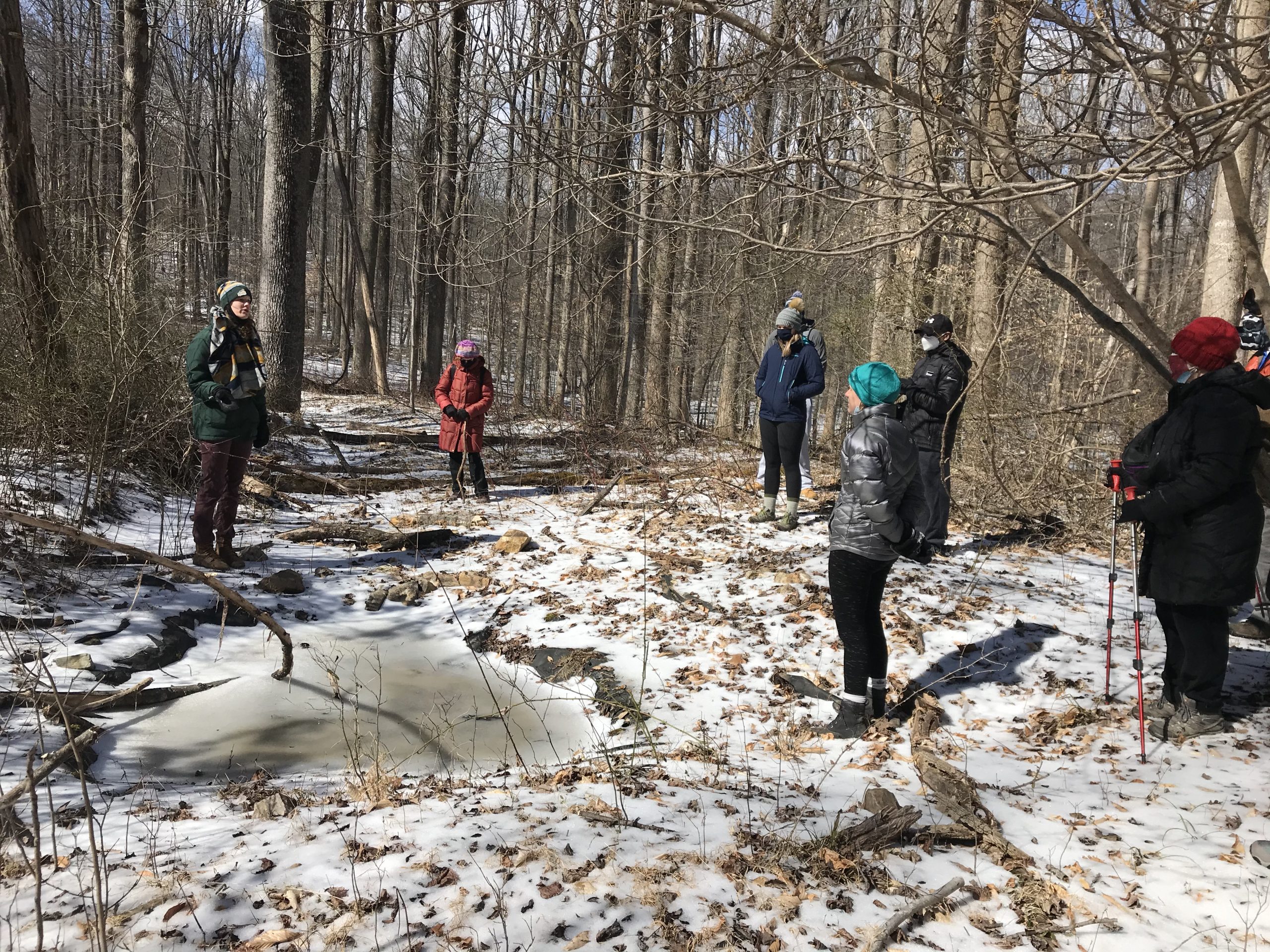
Thank you to the brave souls who ventured out with us on the first round of chilly Sweetheart Hikes at the Preserve these past two weekends! How incredible was it to be talking about the evidence and presence of yellow-bellied sapsuckers from their sapwells when we see one just moments later? It just goes to show that you should always keep your eyes and ears open during a winter walk. Even though we were slipping and sliding along the icy or muddy trails, we learned about several love stories of the wildlife and people who call or called this ever-changing landscape home. At the bottom of this post is the first self-guided hike packet for you to follow this trail on your own to relive your memories (if you attended) or make new ones.
Following up one of our discussions from the vernal pool (frozen puddle pictured above), I wanted to clarify a biological fact. Not all of the salamanders in our area rely on vernal, or temporary/seasonal pools for their reproduction! Some, such as the eastern red-backed, are woodland salamanders that will lay their eggs on land! After they hatch, they do not have an aquatic larval stage. Instead, they immediately look like miniature versions of their parents.
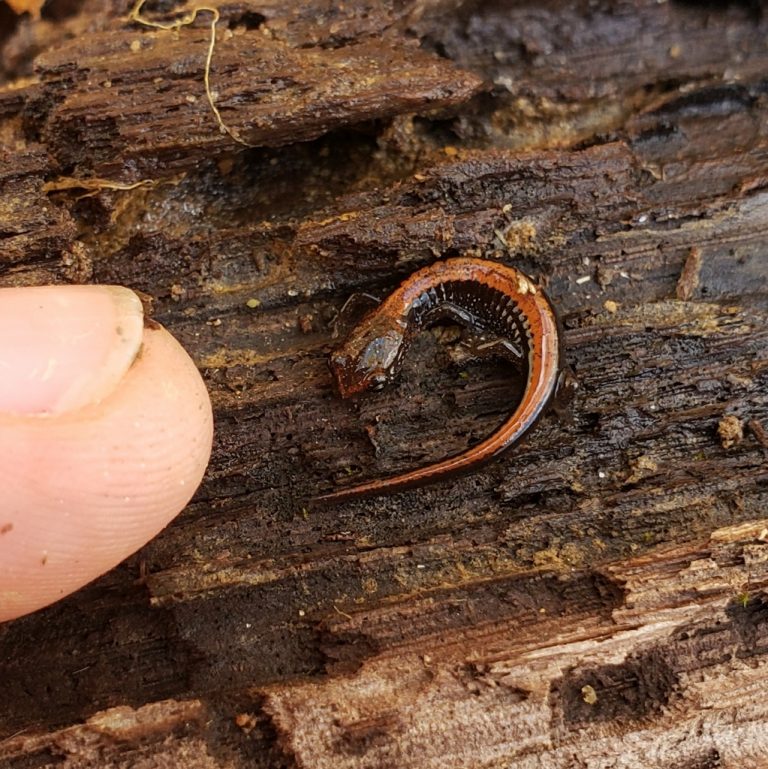
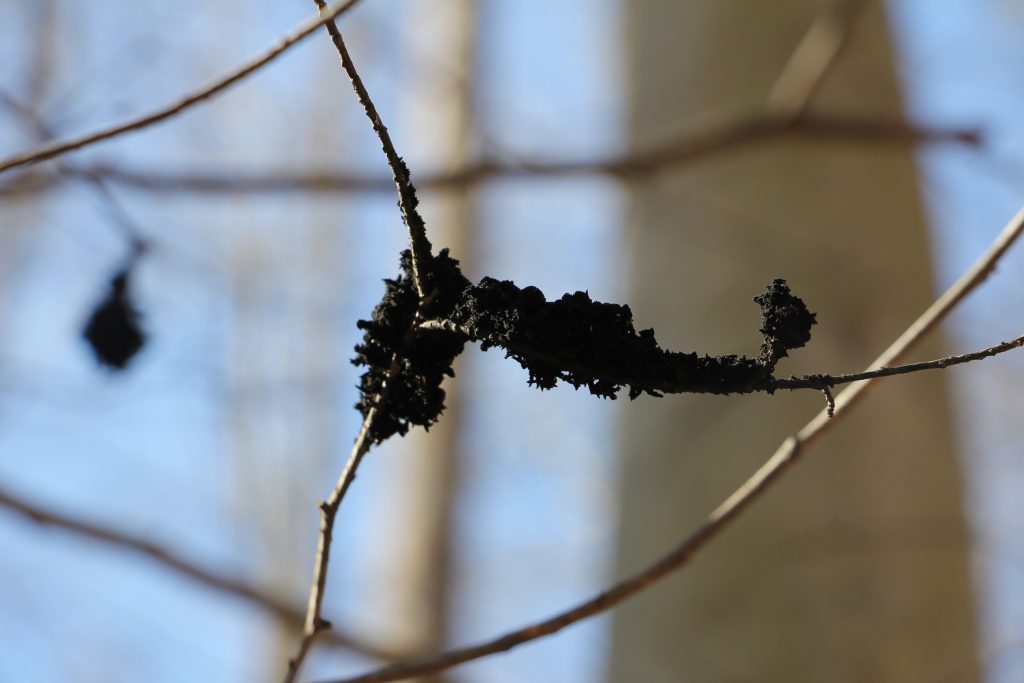
On our most recent Sweetheart Hike this weekend, we misidentified a type of squishy dark fungus growing on our American beech trees (Fagus grandifolia), which we thought looked like the Black Plague. This is not a chaga mushroom (Inonotus obliquus), which usually grows on birch tree bark in colder climates. The mold we saw stems from a dynamic relationship with a very small bug.
The beech blight aphid (Grylloprociphilus imbricator) makes its home on beech tree branches and leaves. These tiny insects appear as a lint cloud or fresh snow during April to November. The beech blight aphids feeds on sap, making a huge amount of waste. The excessive amounts of poo create a sticky substance, called “honeydew”. This is what attracts sooty mold fungus (Scorias spongiosa), which feeds on the honeydew, not the tree, sometimes growing as large as a football! The aphids and resulting sooty mold do not threaten the survival of a healthy tree, but still looks ominous when you see it in the dangling above your head in the forest.
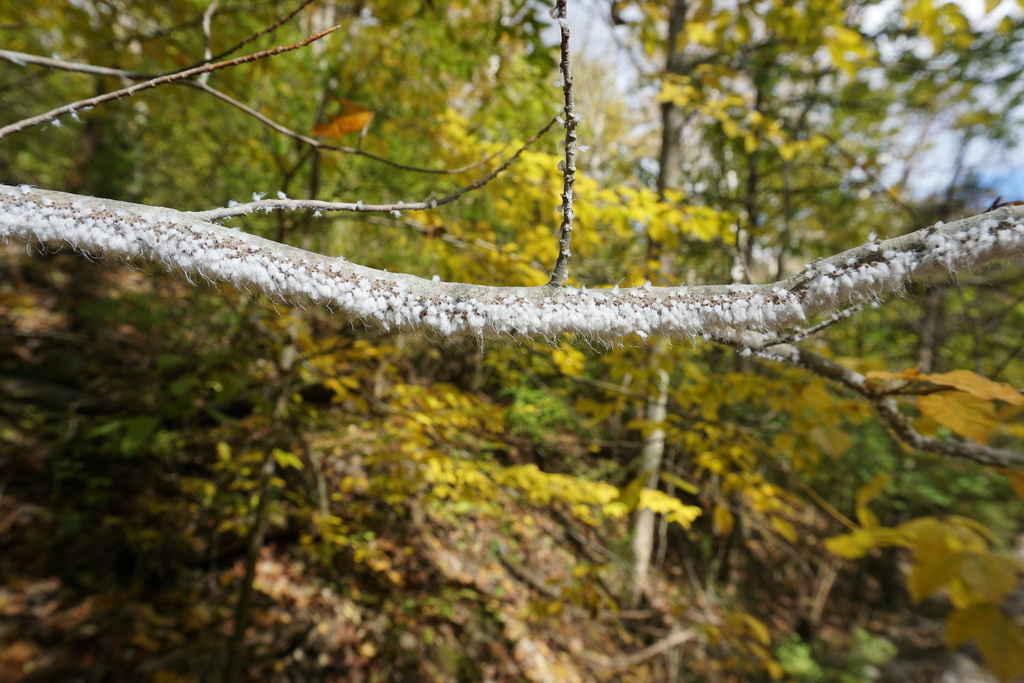
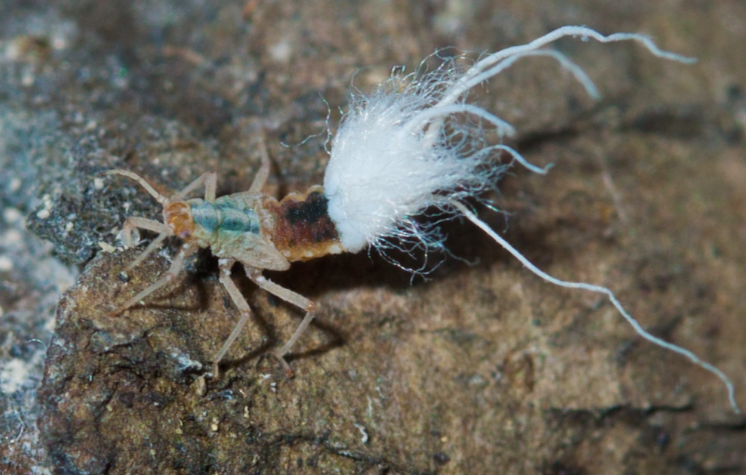
Did you know aphids have dance skills? When the colony is disturbed, they wave their abdomens in the air as a warning to predators. Check out this video to watch their moves!
Sweetheart Hike participants also had questions about the geology of the Preserve after an introduction to the life of Hampton Cole, who owned 16 acres within, what is now, the Preserve in the mid-1800s. We learned a lot of quarrying happened within the mountains in the past, due to the nature of our rock formations. A majority of the Preserve is composed of quartzite rock. This quartzite you find is everywhere (anyone who has hiked here can probably complain about the ample amount of rock that you can trip over on our trails), and seems to be in very angular, geometric shapes – almost like long rectangular building stones. Because of this, these rocks made excellent building materials, and were used to construct most of the structures within and around the Bull Run Mountains (note, the Beverley-Chapman Mill is constructed entirely of Bull Run Mountains quartzite stone)!
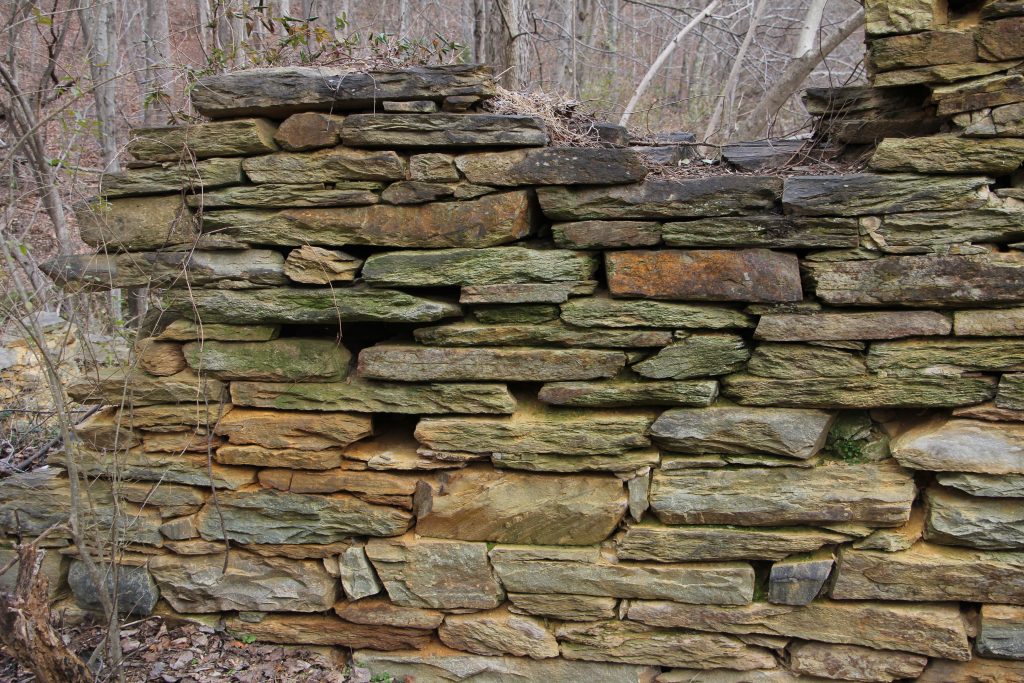
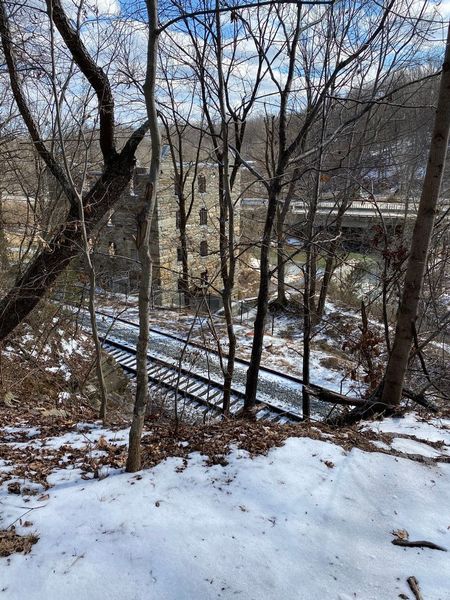
View this blog post by Dr. Callan Bentley, a geologist who has done quite a bit of research into our local rock formations, for more information on the geologic history of Thoroughfare Gap. This is just one of the many ways that the deep time of the mountains has influenced how our landscape has been interacted with.
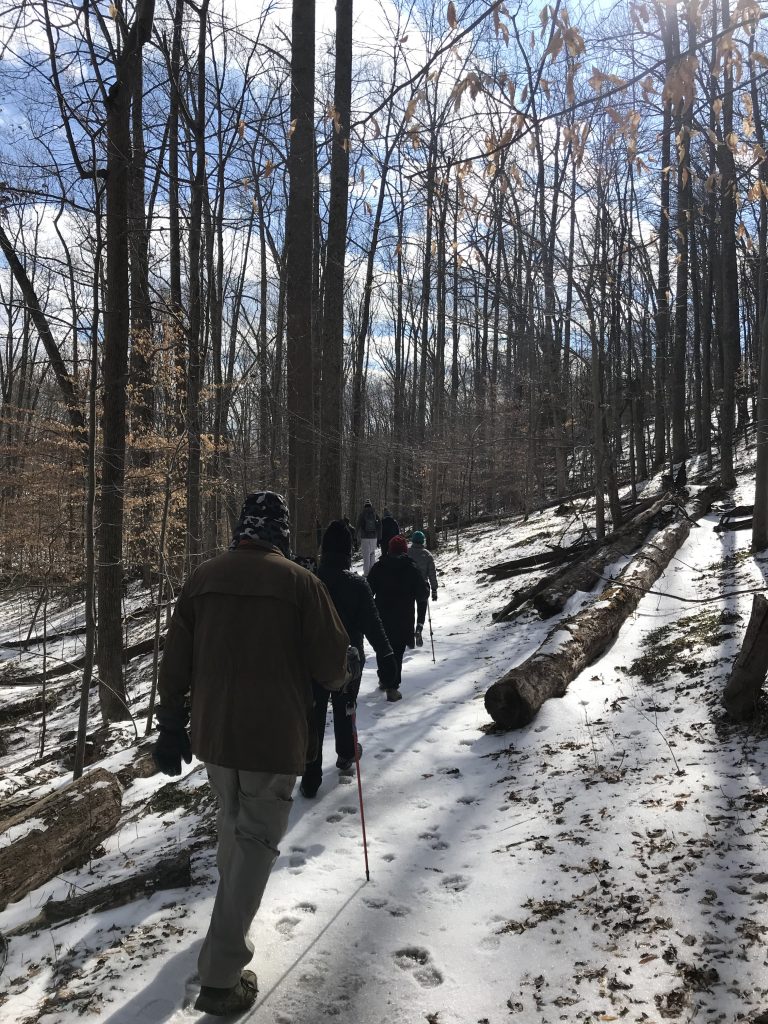
Did you miss out on these staff led hikes and are regretting it? Fear not – we have just the solution for you! Our outreach assistant and Sweetheart Hike architect has created a self-guided version. Whether you are a family with younger kids, an individual who prefers solitary hiking, or even a virtual visitor from out of town, this packet will lead you well. It includes a highlighted map of the trail route and a few of the species and stories we stopped to discuss. Hopefully your own private session will be a different kind of winter wonderland! Let us know in the comments down below if you and/or your loved ones make use of it or you think of any other love stories we should include.
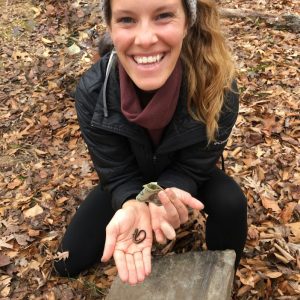
Very interesting!! And great pictures. We’d love to get down there to hike some day.
Hi Aunt Louise!!
I would love to go on a hike with you and the family soon! If that doesn’t work, my goal is to create a few more virtual/self-guided hikes to continue to provide people from out of town the chance to see a small portion of what the Preserve has to offer!
All the best,
Becky
Comments are closed.